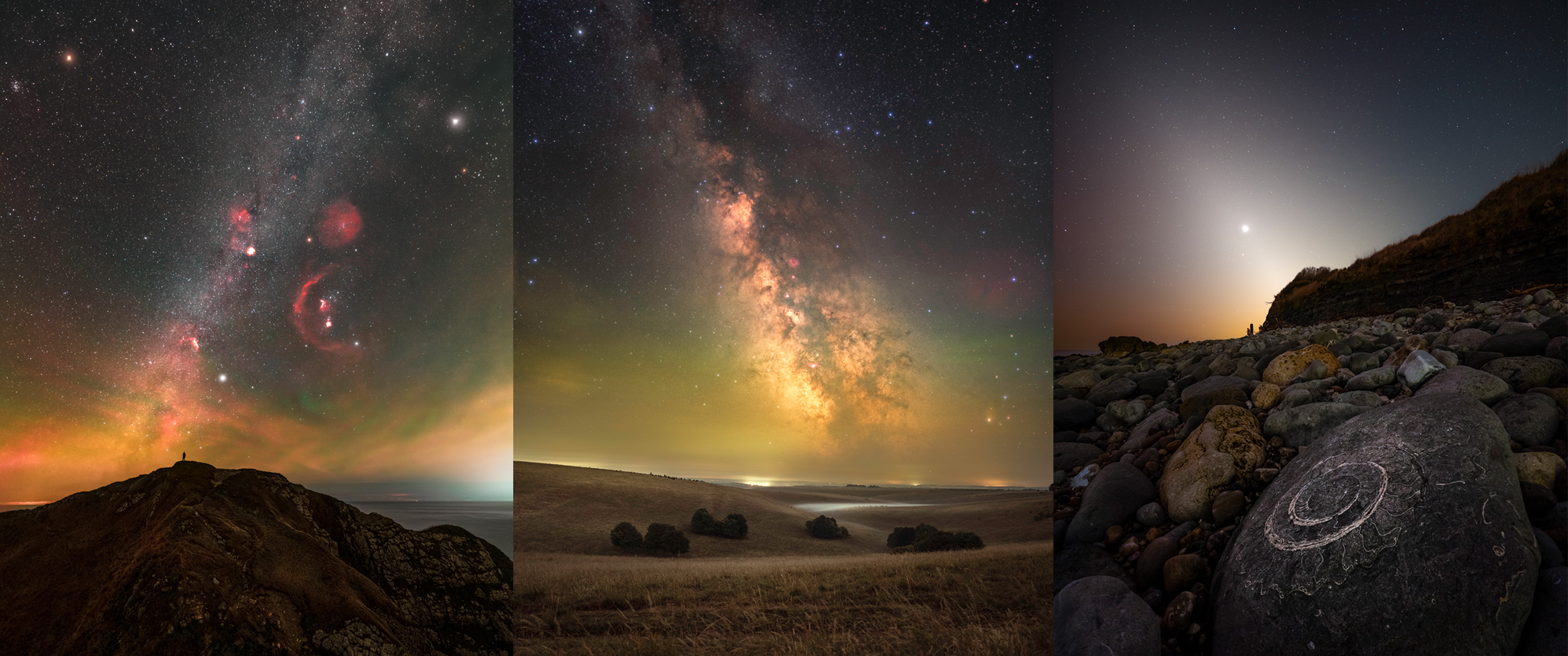Watch sheep flow like water in mesmerizing time-lapse drone footage
A photographer captured the aerial views over seven months.

Have you ever counted sheep to fall asleep? If so, you'll probably find it very relaxing to watch a recent viral video showing a mesmerizing aerial time-lapse of more than 1,000 sheep grazing in grassy meadows.
In the footage, recorded by a drone hovering high overhead, the sheep's tiny bodies swirl, ebb and flow as the flock moves through gates and over fields and pastures. Drone photographer Lior Patel captured the footage in Peace Valley near Yokne'am, a town in northern Israel, and the sped-up time-lapse video quickly went viral after he shared it on Facebook on June 26.
Over seven months, Patel observed and shot drone video of the herd — which ranged in size from approximately 1,000 to 1,700 sheep — as the sheep traveled about 4 miles (7 kilometers) from their winter enclosure to a summer pasture, he told Live Science.
Related: Drone catches Arecibo Observatory's last moments
The project began Jan. 2, when Patel sat down with the flock's shepherd, whom Patel identified by the single name Mustapha, to talk about filming the sheep with a drone, Patel said. The sheep inhabited winter pastures until the weather got too warm and the grass dried up, whereupon they moved to the summer pastures.
"I started coming there once every two weeks," Patel said.
The first few times Patel visited, he was observing the flock, figuring out the elasticity of the herd "and how it spreads and contracts," he said. Once Patel was ready to start shooting, the shepherd would indicate the direction in which the flock was likely to move, and Patel would then send his drone into the air and wait for the sheep to pass underneath, monitoring the drone camera through an app on his iPad.
Get the world’s most fascinating discoveries delivered straight to your inbox.
But trying to predict exactly where the sheep would go was often hit-or-miss, Patel told Live Science.
"At the beginning, it was very hard; I assumed they'd go left, and they went right. I didn't see the logic in the sheep movements," he said.
A post shared by Lior Patel - Drone Photography (@liorpatel)
A photo posted by on
Drone videos can detect landscape features that hide long-hidden ancient structures, such as a Stonehenge-like mound in Ireland and 2,000-year-old desert carvings, both discovered in 2018. Drones also capture astonishing views of natural phenomena that are too dangerous for people to approach closely, such as the eruption of Iceland's Fagradalsfjall volcano in March.
Footage from drones has even enabled scientists to identify radiation hotspots in Chernobyl by pinpointing locations with high levels of contamination that weren't yet identified on official maps, Live Science previously reported.
Researchers have also used drone footage like Patel's — overhead views of large herds on the ground — to better understand how animals behave collectively. Scientists studying migrating caribou in Canada recorded the animals from the air to observe how social interactions between individuals affected overall herd movement, according to a 2018 study published in the journal Philosophical Transactions of the Royal Society B.
"New technologies, like the drones and computer vision we used in our study, are really exciting because they give us the ability to collect movement data on every single individual in a group simultaneously," said Andrew Berdahl, co-author of the 2018 study. (Berdahl, an assistant professor at the University of Washington's School of Aquatic and Fishery Science, was a postdoctoral fellow at the Santa Fe Institute in New Mexico at the time of the study.) "That means we can now unravel the important role that social interactions play in guiding migratory movements," Berdahl said in a statement in 2018.
In fact, data from Patel's sheep footage could be applied to scientific research someday, he told Live Science.
"As a videographer, I did this just for the beauty of it," he said. "But there's interest in the raw footage as data. When you play the footage at a normal speed, you can find specific patterns of movement within the herd itself.
"I wasn't aware of that when I shot it," he added, "but now I understand why people are interested in it as data, not only as a so-called beautiful video."
Originally published on Live Science.

Mindy Weisberger is a science journalist and author of "Rise of the Zombie Bugs: The Surprising Science of Parasitic Mind-Control" (Hopkins Press). She formerly edited for Scholastic and was a channel editor and senior writer for Live Science. She has reported on general science, covering climate change, paleontology, biology and space. Mindy studied film at Columbia University; prior to LS, she produced, wrote and directed media for the American Museum of Natural History in NYC. Her videos about dinosaurs, astrophysics, biodiversity and evolution appear in museums and science centers worldwide, earning awards such as the CINE Golden Eagle and the Communicator Award of Excellence. Her writing has also appeared in Scientific American, The Washington Post, How It Works Magazine and CNN.



